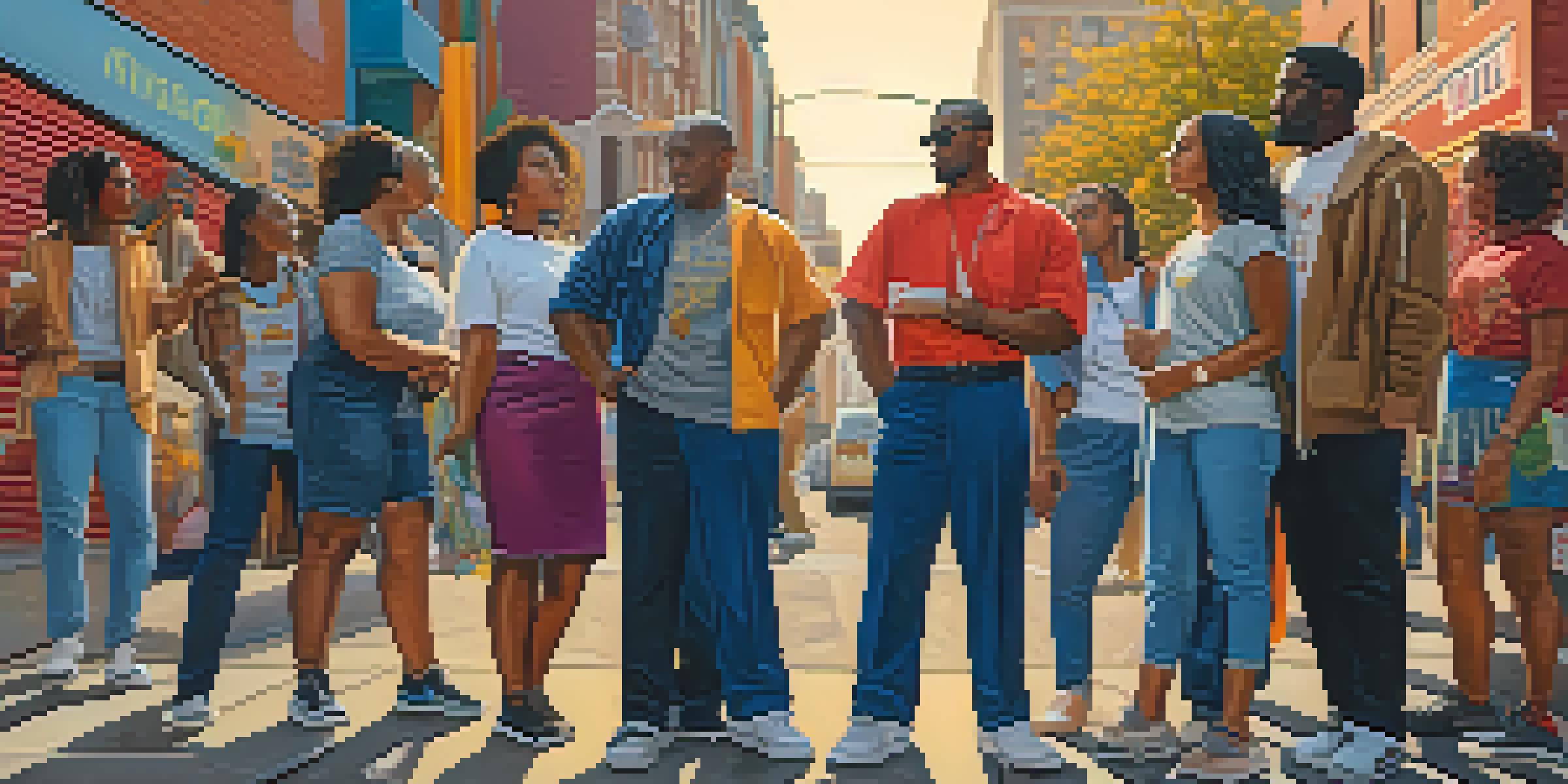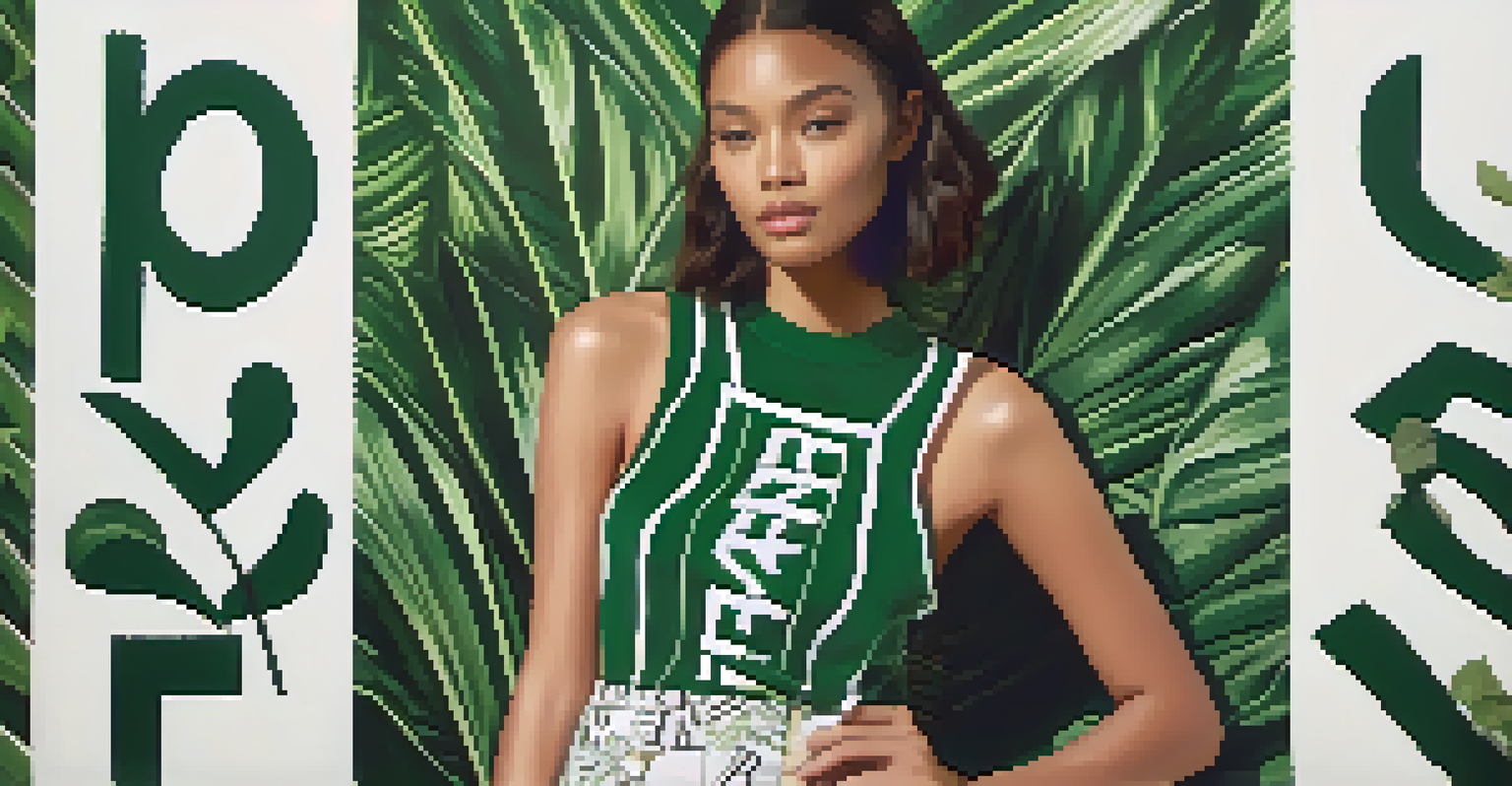Artistic Dissent: Fashion as a Medium for Political Expression

The Intersection of Fashion and Politics
Fashion has long been intertwined with politics, often reflecting societal values and tensions. From the suffragettes donning white dresses to symbolize purity and power, to the vibrant colors of the LGBTQ+ pride movement, clothing can serve as a canvas for political messages. This intersection allows designers and wearers alike to showcase their beliefs and spark conversations about pressing issues.
Fashion is the armor to survive the reality of everyday life.
When individuals wear garments that challenge the status quo, they utilize fashion as a form of dissent. For example, the black attire worn by attendees at the 2018 Golden Globes was a collective statement against sexual harassment in Hollywood. Such actions highlight how fashion can unify people around a cause, transcending mere aesthetics to become a form of activism.
Moreover, the use of fashion as political expression is not confined to high-profile events. Everyday clothing choices can reflect personal beliefs and societal critiques, making political statements accessible to all. This democratization of fashion allows everyone to participate in the conversation, regardless of their platform.
Historical Examples of Fashion as Protest
Throughout history, fashion has played a pivotal role in various movements. During the Vietnam War, American youth adopted countercultural styles, such as bell-bottoms and tie-dye shirts, as a rejection of mainstream values and a call for peace. Such styles became synonymous with the anti-war sentiment, showcasing how clothing can encapsulate collective ideals.

In the 1980s, the rise of punk fashion, characterized by leather jackets and bold hairstyles, represented a rebellion against societal norms and political oppression. This movement was not just about style; it was a powerful statement against authority and conformity, allowing individuals to express their dissent through their appearance.
Fashion as Political Expression
Fashion serves as a powerful medium for political expression, allowing individuals to showcase their beliefs and spark important conversations.
Similarly, the 'Black Lives Matter' movement has seen activists using fashion to promote their message. T-shirts emblazoned with powerful slogans have become symbols of resistance, emphasizing the importance of visibility and solidarity in the fight for justice. These historical examples illustrate that fashion is more than fabric; it is a powerful tool for political expression.
Current Trends in Fashion Activism
Today, fashion activism is more vibrant than ever, with designers and brands increasingly using their platforms for social change. Many contemporary designers are creating collections that address issues such as climate change, racial inequality, and gender rights. This shift signifies a growing recognition of the responsibility that comes with influence in the fashion industry.
Clothes mean nothing until someone lives in them.
Social media has further amplified this trend, allowing designers to reach a global audience and engage in meaningful dialogues. Hashtags like #FashionForFuture and #WearYourTruth have emerged, encouraging individuals to showcase their political beliefs through their clothing. This connectivity enhances the impact of fashion as a medium for dissent, creating a community of like-minded individuals.
Moreover, some fashion brands are actively participating in protests and campaigns, aligning their business practices with their political stances. By supporting causes and collaborating with activists, these brands demonstrate that fashion can be a catalyst for change, inspiring consumers to think critically about their purchases and the messages they convey.
The Role of Social Media in Fashion Dissent
Social media platforms have revolutionized how political messages are shared through fashion. Influencers and activists use Instagram, TikTok, and Twitter to showcase their outfits while discussing important issues, making the intersection of fashion and politics more accessible. This democratization enables anyone with a smartphone to participate in the dialogue and contribute to fashion activism.
Hashtags have become vital tools for organizing and spreading messages. For instance, the #MeToo movement not only highlighted personal stories of harassment but also encouraged individuals to wear black as a sign of solidarity. Such collective actions on social media amplify the impact of fashion choices, creating a sense of community among activists.
Social Media Amplifies Fashion Activism
Platforms like Instagram and TikTok enable widespread sharing of political messages through fashion, democratizing activism and fostering community.
Additionally, social media allows for real-time responses to political events, enabling fashion to adapt quickly to the changing landscape. Designers can create and promote collections that reflect current issues, ensuring that fashion remains relevant and impactful. This dynamic relationship between fashion and social media enhances its role as a medium for political expression.
The Impact of Celebrity Fashion Choices
Celebrities wield significant influence in the world of fashion, and their choices often send strong political messages. When high-profile figures wear clothing that supports a cause, they raise awareness and inspire their followers to engage with those issues. For example, when artists like Beyoncé and Lady Gaga incorporate political statements into their outfits, they amplify the conversation around social justice.
Fashion at major events, such as the Met Gala or the Oscars, has become a platform for stars to express their political stances. The bold choices made by these celebrities can ignite discussions and encourage fans to reflect on their own values. This visibility plays a crucial role in shaping public opinion and fostering activism.
However, it's essential to recognize the responsibility that comes with this influence. Celebrities must ensure that their fashion statements are authentic and not merely performative. When their choices resonate with genuine beliefs, they can inspire positive change and encourage their audience to take action.
Challenges in Fashion Activism
While fashion activism holds immense potential, it also faces challenges. One significant issue is the risk of commodification, where political messages become diluted through commercialization. When brands capitalize on social movements without genuine commitment, it can lead to skepticism and backlash from consumers who seek authenticity.
Moreover, the fast fashion industry often contradicts the principles of sustainability and ethical activism. Many brands that promote social change may still engage in practices that harm the environment or exploit labor. This hypocrisy can create confusion and disillusionment among consumers striving to make impactful choices.
Challenges in Fashion Activism
Despite its potential, fashion activism faces issues like commodification and the contradictions of fast fashion that can undermine its authenticity.
Additionally, navigating the fine line between activism and aesthetics can be tricky for designers. While they aim to make a statement, they must also consider marketability and consumer preferences. Finding this balance is crucial for ensuring that fashion remains a powerful medium for political expression without losing its artistic integrity.
Looking Ahead: The Future of Fashion and Politics
As we look to the future, the relationship between fashion and politics is poised to evolve further. With increasing awareness of social issues, more designers are likely to embrace activism as an integral part of their work. This shift could lead to a new era of fashion that prioritizes ethical practices and promotes meaningful messages.
Furthermore, technological advancements will likely play a significant role in shaping this evolution. Virtual fashion shows and digital collections may provide new avenues for designers to express their political beliefs without the constraints of traditional fashion weeks. This innovation could democratize fashion even further, allowing diverse voices to be heard.

Ultimately, the future of fashion as a medium for political expression hinges on the collective efforts of designers, consumers, and activists. By fostering an environment of collaboration and authenticity, we can ensure that fashion remains a powerful tool for dissent and a catalyst for positive change in society.